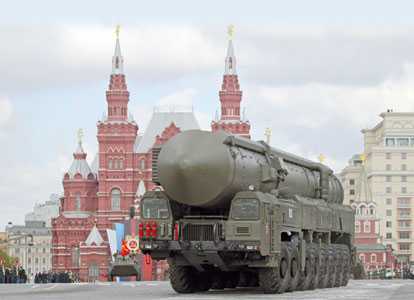DEBKAfile Special Analysis
September 20, 2008, 1:30 PM (GMT+02:00)
Euphrates pipes for destroyed Syrian reactor designed to be part of Iran’s military program
Russia, China and Germany refuse to countenance tougher sanctions against Iran notwithstanding the International Atomic Energy Agency’s report from Vienna that its inspections of suspect activities and covert projects were stalled by Tehran’s non-cooperation. Diplomats for the five permanent Security Council members and Germany, meeting at the State Department Friday, Sept 19, therefore failed to agree on a new round of sanctions ahead of their foreign ministers’ meeting at UN Center next week.
The meeting avoided discussing the timing and content of a fourth round of sanctions, only broadly calling on Iran – for the umpteenth time after numerous rejections – to accept the incentives on offer for halting uranium enrichment and cooperating with UN inspections.
The nuclear watchdog reported that Tehran had stalled its efforts to establish whether or not Iran was developing nuclear warheads, enriching uranium for military purposes, testing nuclear explosives or building nuclear-capable missiles.
Tuesday, Sept 16, the UN watchdog gave a closed meeting of the 35-nation board of the International Atomic Energy Agency photos and documents proving Iran had tried to refit a long-distance Shehab missile to carry a nuclear payload. The also produced calculations and diagrams from Iranian missile and nuclear experts’ computers on nuclear detonations and how to build nuclear-capable missiles.
The next day, Wednesday, CIA chief Michael Hayden disclosed that the destruction of the Syrian reactor – as a result of intelligence collaboration with a “foreign partner” who first identified the facility’s purpose – spoiled a project “that could have provided Syria with plutonium for nuclear weapons.”
He did not name the foreign partner, but the reference to Israel was obvious. He also said the reactor was similar to the North Korean model.
“We were able last year to spoil a big secret, a project that could have provided Syria with plutonium for nuclear weapons,” Hayden said, adding: “When pipes for a massive cooling system were laid out to the Euphrates River in the spring of 2007, there would have been little doubt this was a nuclear reactor.”
The Bush administration released all this data in order to back up the IAEA report and tell the international community that the US and Israel were furnished with more intelligence confirming Iran’s covert nuclear projects and the clandestine partnershipn between Tehran, Damascus and Pyongyang. North Korea was also made aware that Washington had not missed its preparations for re-activating its nuclear reactor.
Nuclear watchdog officials asked Tehran to explain why its experts were busy making calculations for military projects, claimed to be non-existent. No answer has been forthcoming as yet. The Iranian representative only said the materials had been forged by certain parties as a provocation.
Nonetheless, Russian, Chinese and German diplomats attending the IAEA board meeting last Tuesday insisted that the evidence they saw did not prove Iran was engaged in developing nuclear weapons.
Despite the fact that leading world powers have tied themselves in knots to avoid keeping nuclear weapons out of Iran’s hands, Israel’s prime minister Shimon Peres plans to deliver a speech at the UN General Assembly next week announcing that Israel is against resorting to military action against Iran and relies on sanctions.
DEBKAfile’s political circles stress that the Israeli government has never confirmed the position embodied in his address.
Ahead of his address to the General Assembly, Iranian president Mahmoud Ahmadinejad, grandstanding as always, challenged the American presidential candidates to a public debate “over global issues, in the presence of the media at the UN. He also said that while “some say the idea of Greater Israel has expired, I say the idea of lesser Israel has expired, too.”
